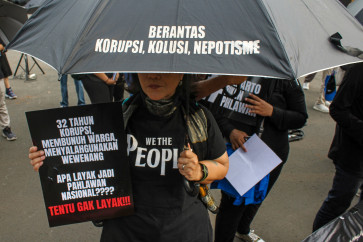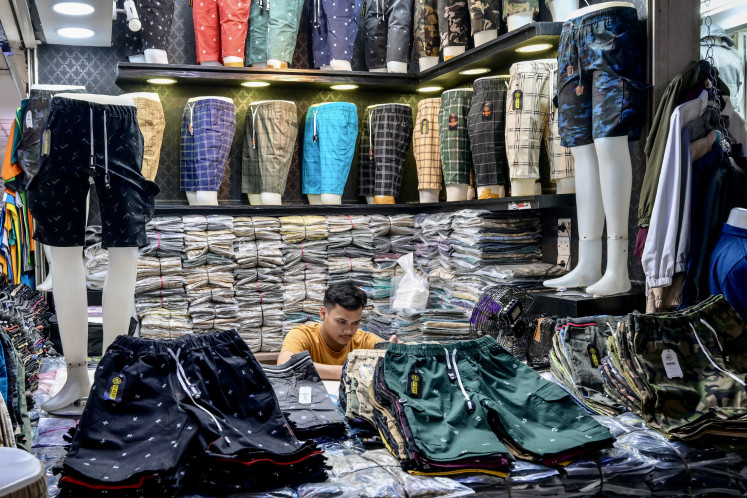C. Java will meet its green space requirements: Official
The Central Java Environment Agency (BLH) has said that 10 regencies/cities in Central Java will be able to set aside 20 percent of their respective areas as open green spaces
Change text size
Gift Premium Articles
to Anyone

T
he Central Java Environment Agency (BLH) has said that 10 regencies/cities in Central Java will be able to set aside 20 percent of their respective areas as open green spaces.
Agency head Djoko Sutrisno said the 10 regencies/cities, namely Rembang, Pati, Jepara, Temanggung, Batang, Pekalongan, Kebumen, Banjarnegara, Purwokerto and Boyolali, would be able to meet these expectations because they still had large quantities of open space.
Djoko said that the requirement to set aside 20 percent of these areas for green spaces was already regulated under Law No. 26/2007 on Spatial Planning. In reality many regencies/cities in Central Java and Indonesia are far below the requirements of the law, as they mostly accounted only for 13 percent.
In line with the law, each regency/city is obliged to have an open green space of 30 percent, of which 20 percent is for public space and 10 percent for private space, “We have given priority to public spaces,” Djoko said.
He added that failing to meet the requirement for open spaces could see perpetrators fined between Rp 500 million (US$53,000) and Rp 2 billion, or be sentenced to 3 years imprisonment.
“The sanction will be given not only to violators of the spatial regulation, but also to parties that issue permits for the establishment of buildings in green spaces,” Djoko explained.
The environment agency had targeted Central Java to have a total open green space area of 250 hectares next year, Djoko said. Of this target, 40 percent has thus far been realized, he added.
“To meet the target, since 2008 we have made various efforts to change certain areas into open green spaces. We’re optimistic the target will be achieved in 2013,” he said.
In the Central Java capital of Semarang, open green spaces account for far less than the 20 percent level. Data from the Semarang Regional Planning Agency shows that so far such spaces account for only 7.5 percent.
Head of the city’s infrastructure and region development Purnomo admitted it was difficult to meet the requirement for open spaces as most areas have been dominated by buildings. If there are any, the spaces have already been rented by third parties for business/commercial activities.
“Semarang city will be able to set aside adequate open green spaces if all the above-mentioned areas are no longer rented by third parties,” he said.
He reiterated that if the city administration was willing to return its rented spaces to their original functions, the target could be easily met.
Regardless of the difficulties, the city administration has prepared several strategies to set aside 20 percent of its areas for open green spaces.
One of the strategies will be the deliberation of a bylaw on conservation areas in which buildings will be banned, and areas will be rejuvenated.
“For area rejuvenation, for example, Rejomulyo market will be changed into a park,” Purnomo added.









